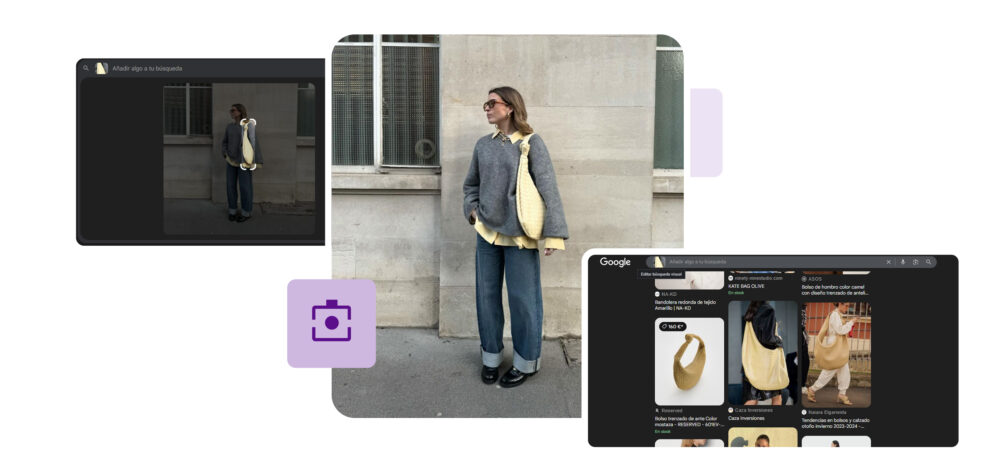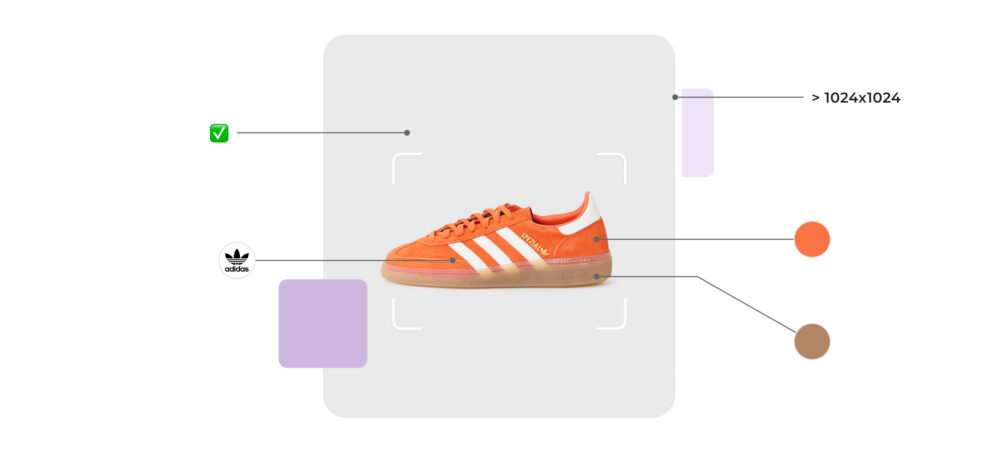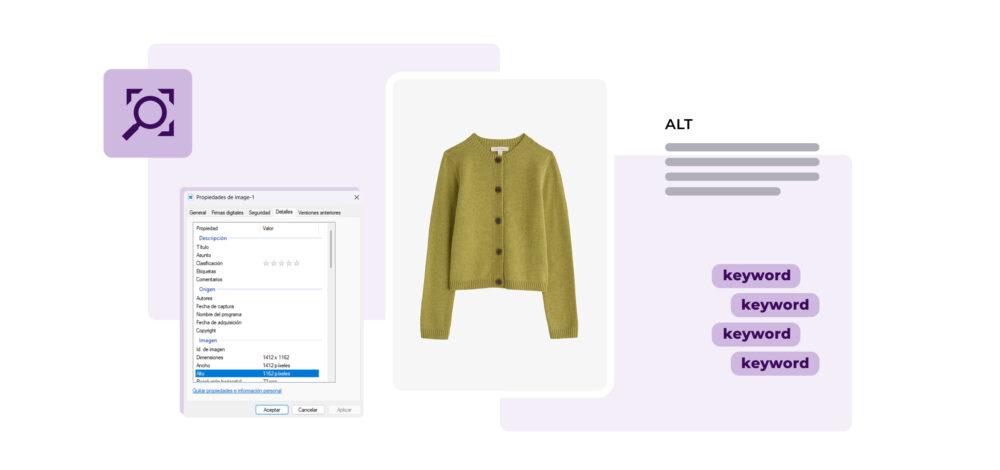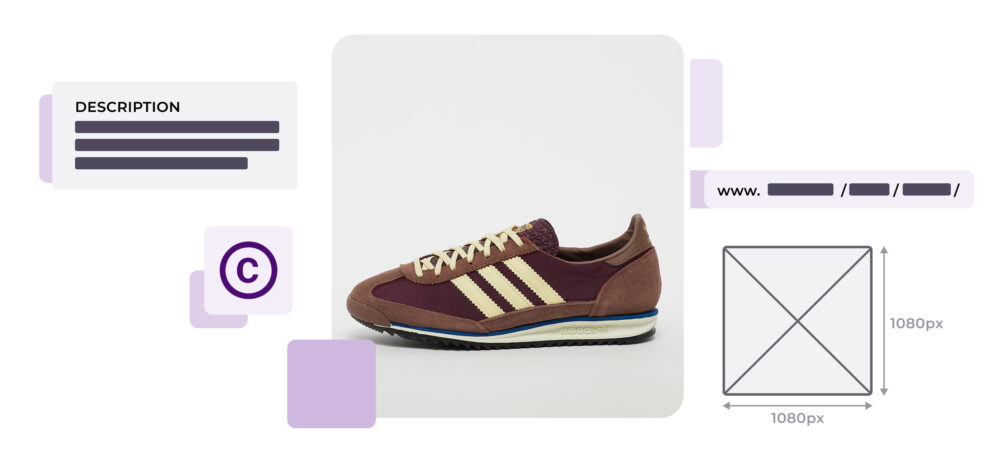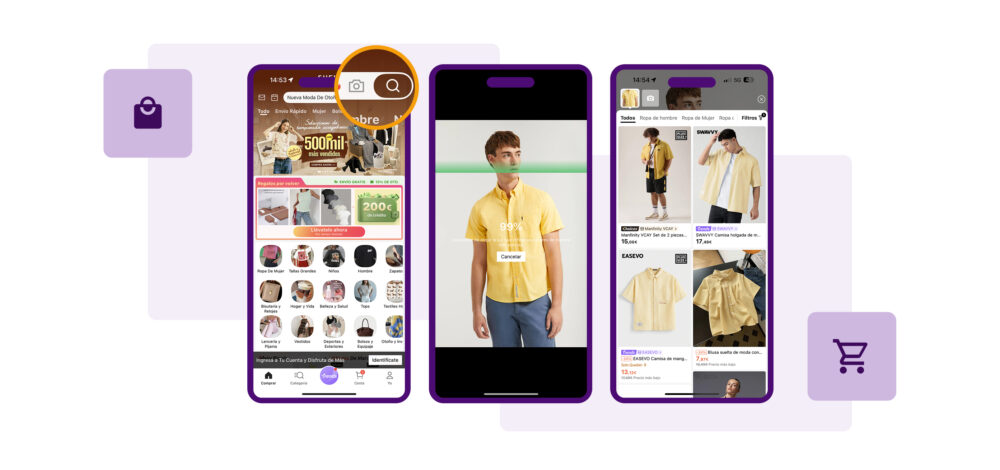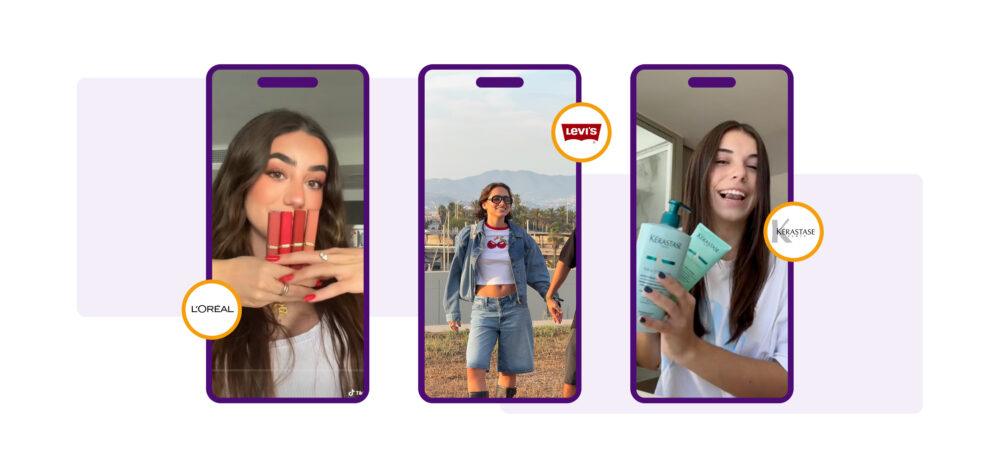Visual Search Revolution: How to optimise your Digital Shelf for visual searches
Introduction: Image is Everything
Imagine a world where a simple photograph opens the door to thousands of products. Where inspiration instantly transforms into a shopping opportunity. This world already exists and is revolutionising e-commerce.
Consumers have left traditional word-based searches behind. They now use their cameras like a magic wand to discover products. A photo of the perfect outfit spotted on the street can become an immediate purchase.
Google Lens processes more than 20 billion visual searches monthly. Pinterest registers more than 5 billion searches a month as a visual search engine. These figures reveal a fundamental shift in digital consumer behaviour.
For brands, this shift presents extraordinary opportunities. It also poses completely new challenges. The Digital Shelf must evolve to connect with visually-minded consumers. Images have become the new universal language of commerce.
What is Visual Search and Why is it so Important for E-commerce?
Visual search allows users to find information using images instead of words. Artificial intelligence algorithms analyse specific colours, shapes and patterns. They then compare these elements with millions of indexed images to provide accurate results.
The process is intuitive for any user. You take a photo or upload an existing image. The system processes it in seconds and displays similar available products. This simplicity removes the language and technical barriers that complicated traditional searches.
The main platforms have already fully adopted this technology. Google Lens dominates the market with its extensive database. Amazon offers integrated visual search in its mobile app. Pinterest directly connects visual inspiration with shopping opportunities.Its importance for e-commerce lies in the shift in consumer behaviour. Users who use visual search show greater purchase intent from the very first contact. Some studies show that companies that leverage visual search achieve a conversion rate up to 27% higher on e-commerce platforms.
This technology reduces friction in the buying process. Consumers go directly from inspiration to the act of buying. This accelerated flow completely transforms the traditional customer decision journey.
Why Visual Search Benefits your Digital Shelf
Visual search is completely redefining the rules of online visibility, as algorithms now value aspects that previously had little commercial weight. The quality of an image, for example, can directly determine its ranking in search results, forcing brands to rethink their strategy. Elements such as composition, lighting or backgrounds are no longer merely aesthetic details but have become key factors, while visual metadata has become as relevant as traditional SEO keywords.
This transformation presents a challenge for established brands, but it also opens up a field of extraordinary opportunities. An optimised presence on visual search platforms not only guarantees greater visibility, but also provides access to new audiences at decisive moments of inspiration or purchase intent. Furthermore, emerging visual trends and search patterns offer valuable information about changing consumer preferences, which translates into strategic insights for product development and marketing planning.
In this new scenario, competition is intensifying but, at the same time, it is becoming more democratic. Thanks to visual optimisation, even smaller brands can compete with major market players, proving that differentiation no longer depends solely on advertising investment, but on how intelligently visual assets are managed.
The 5 Pillars for Optimising your Digital Shelf for Visual Search
Pillar 1: Image quality is sacred
Image quality is the ultimate determinant of success in visual searches. Algorithms prioritise sharp, well-lit images with a minimum resolution of 1024×1024 pixels. The background should be neutral to focus attention solely on the main product.
Uniform lighting is essential to avoid shadows that distort the appearance. Colours must be accurate and realistic, as algorithms compare shades with existing databases. Excessive saturation can negatively affect correct indexing.
Include multiple angles of the same product to improve algorithmic understanding. Front, side and detail views provide valuable information for automatic recognition. Visual consistency across all products strengthens brand recognition.
Pillar 2: Intelligent metadata and image semantics
Metadata provides the crucial context that algorithms need to index correctly. Alt text must be specific and descriptive, including the product, colour, material and distinctive features. Avoid keyword stuffing, which can incur an indexing penalty.
Filenames should be descriptive, using hyphens to separate relevant words. EXIF tags will provide valuable technical information about camera settings and location where appropriate.
Image semantics refers to the contextual meaning that algorithms interpret. Use consistent vocabulary in all descriptions by creating an internal glossary of preferred terms. This consistency significantly improves automatic recognition.
Pillar 3: Structured data and Schema markup (ImageObject)
As we discussed in the article on optimising the Digital Shelf for conversational searches, implementing a structured data schema is essential to help search engines retrieve and deliver the best results for users.
Schema.org markup provides a common language to describe information and convey it to search engines.
ImageObject is the specific schema for product images. It defines properties such as URL, description, dimensions and licence. This structure facilitates automated indexing. Valid and complete markup allows for the creation of rich snippets that increase visibility in search results.
Keep data automatically updated by synchronising it with your inventory systems. Outdated information harms both credibility and performance in visual searches.
Pillar 4: Integrating visual search into your own shop
Internal visual search significantly improves the user experience. Visitors can search for products using their own images. This functionality reduces friction in the buying process. Implement a visible camera button in the search bar so that users can easily find it.
Recognition technology can be integrated via APIs. Google Cloud Vision and Amazon Rekognition offer robust solutions. These platforms provide enterprise-level accuracy.
Optimise the system’s response times. Users expect instant results. In addition, provide alternative results when there is not an exact match. Show similar products by colour, shape or category. This flexibility improves the system’s usefulness.
Visual search must work on mobile devices, given that most visual searches happen on smartphones. The mobile experience must be smooth and fast.
Pillar 5: User-Generated Content (UGC) and visual consistency
User-generated content expands your visual reach. Customer photos show products in real-life contexts. This authenticity improves trust and the indexing of your products.
Encourage customers to share product images by offering them discounts or recognition for their visual contributions. Authentic UGC is highly valued by algorithms.
Moderate visual content to maintain quality. Establish clear guidelines on lighting and composition. Use specific hashtags to organise the content generated by your users. Create visual campaigns with unique tags. This organisation makes content collection and management easier.
Visual consistency must be maintained even in this type of content. Provide users with simple style guides and offer examples of successful photos as a reference. Lifestyle images complement product photos. They show the context of use and practical application. This variety improves discovery opportunities.
Success Stories: Integration with Marketplaces andPlatforms
ASOS was one of the first to integrate visual search into its mobile app with the Style Match feature, launched in 2017. This allowed users to upload an image to receive suggestions for similar products, which generated “great engagement“ from users, according to the company itself. Furthermore, studies by BloomReach show that over a three-month period, visitors who used this tool viewed 48% more products, were 75% more likely to return, and spent 9% more than those who did not.
For its part, Amazon has delved deeper into visual search with new features launched through to March 2025, including:
- Visual suggestions as you type a description.
- The ability to add text to an image to refine the search.
- A camera widget on the lock screen for instant searching with Amazon Lens.
- Tools like “More like this” and Circle to search, which allow searching within images.
Target also embraced visual search by integrating Pinterest Lens into its app and website in 2017. This allowed customers to take a photo and find similar items available at Target. Pinterest had launched Lens that same year with the ability to recognise more than a billion objects and suggest design, fashion or recipe ideas.
Another example is IKEA Place, an app that allows you to visualise furniture in real spaces using augmented reality, with high precision in scale and lighting effects, offering a realistic and useful experience for customers.
These cases demonstrate that strategic implementation requires combining advanced technology with an exceptional user experience. Successful brands integrate visual search in a way that is natural and valuable for the customer.
Common Mistakes and How to Avoid Them
One of the most common mistakes in implementing visual search is neglecting image quality. Low-resolution photos, poor lighting or unclear framing not only hinder the user experience but are also penalised by indexing and visual recognition algorithms. Another common problem is a lack of visual style consistency across products: catalogues with varying qualities, backgrounds or proportions create confusion for both users and recognition systems, making it essential to maintain uniform standards.
Metadata also plays a critical role. Generic or incomplete descriptions limit discoverability, while detailed and specific metadata increases the chances of appearing in relevant results. Added to this is mobile optimisation, which is often overlooked, even though most visual searches are performed on smartphones. Images that load slowly on mobile connections reduce the likelihood of conversion.
Another common mistake is failing to update periodically. Algorithms evolve and optimisation practices must be adjusted accordingly, which makes it essential to establish continuous review processes. Likewise, ignoring the use of structured data limits visibility in search engines, as this markup provides key context for images to appear in rich results. Finally, failing to measure and analyse performance prevents you from identifying what works and what needs to be improved: tools like Google Analytics or Search Console allow you to detect patterns, adjust your strategy and maximise your impact.
Final Keys to Optimising your Digital Shelf for a Visual-First World
Visual search is no longer a promise of the future but a reality that is transforming e-commerce and will make all the difference. Optimising the digital shelf with quality images, intelligent metadata, structured data, technological integration and user-generated content forms a solid foundation for competing in this new landscape. These elements do not act in isolation; they reinforce each other to create a robust and coherent visual ecosystem.
Success requires a comprehensive approach that combines technology, content and user experience. Brands that invest in optimising their Digital Shelf today will attract new audiences and consolidate a competitive advantage that will be difficult for latecomers to match. Technological evolution—led by artificial intelligence, augmented reality and contextual recognition—will further expand the possibilities of this form of search.
In short, digital commerce is becoming increasingly visual: images have become the new universal language of shopping, and only the brands that learn to speak it fluently will thrive in this new era.

